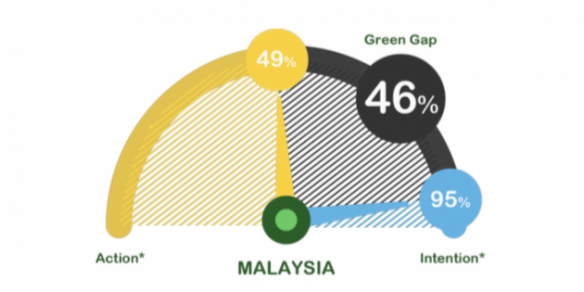Mobile9 launches ad network for apps
By Karamjit Singh February 19, 2014
- Driven by the need to solve two problems
- Better analytics than Google claims cofounder

RECENTLY, Patrick Ooi, the Penang-based founder of mobile platform Mobile9, launched AppZilo, an advertising network focused exclusively on apps. Ooi is the cofounder together with his sister Patricia Ooi.
AppZilo was actually a solution to two problems he was facing: Being unable to deliver his advertisers’ inventory; and suffering from poor ROI (return on investment) himself, despite spending tens of thousands of US dollars a month promoting his own app for Mobile9.
“I couldn’t fulfil the demand from my advertisers, 97% of whom were targeting mobile devices for their advertisements to be delivered to,” says Ooi, who spoke to Digital News Asia (DNA) on a recent trip down to Kuala Lumpur.
On the surface of it, this is puzzling for the 10-year old portal which he launched from his college dorm when he was studying in Australia.
Today, Mobile9 claims 40 million active users with 255 million pageviews a month. Almost 70% of this traffic comes from mobile sources, mainly smartphones and tablets.
Ooi’s business model explains a big part of his problem here. He adopts the CPC or Cost Per Click model where advertisers only pay when their ads are clicked on.
And even with CPC conversions that are above industry average (he claims anywhere from 1% to 1.6%), one can see why he was unable to help advertisers use up their inventory which sits with Mobile9.
This also hits his revenue as he does not get paid if his advertisers do not see their ads clicked on.
Ooi estimates close to 56% of the content on Mobile9 consists of apps, with the balance comprising wallpapers, ringtones, themes and videos (reviews of smartphones, for example).
Most of the content on his site is posted by developers who are attracted by the traffic Mobile9 gets. Their hope is that they can get some users to download some of their content. As with games, the trend in apps is to monetise via in-app purchases.
As an aside, the popularity of first-generation mobile content such as wallpapers and ringtones can be explained by the source of Mobile9’s traffic, about 60% of which comes from India, Indonesia, the Philippines, Pakistan, Mexico and Brazil.
Ooi’s second problem was the effectiveness of his efforts to promote his own app for Mobile9. He was spending tens of thousands a month using various app ad networks to drive more users to download his app.
The experience was frustrating, to say the least. “I was not able to identify where my customers came from, and even among those who downloaded the app, there was no guarantee that they would regularly use my app,” says Ooi, who adds he finds the traditional ad formats boring.
 His response to both situations was to create, in his mind, a win-win-win situation for advertisers, other publishers and himself.
His response to both situations was to create, in his mind, a win-win-win situation for advertisers, other publishers and himself.
“AppZilo was actually the ad delivery network that powered Mobile9,” explains Ooi.
“We took it out, spent three months to enhance it and then launched it as a standalone app ad network to help both publishers and advertisers.
“Besides just pushing ads to our own site, Mobile9, as before, we will now push ads to any affiliated network that partners us, in exchange for a share of the revenue.
“The goal is to increase revenue for publishers while providing more options for advertisers to reach their target market – while we can move our ad inventory more quickly,” he adds.
While there are app-specific ad networks, Ooi is confident that AppZilo will differentiate itself from its peers through innovative ad units. He points to VIVA, the ad unit that was introduced with AppZilo, as just being the start of this.
Based on Apple’s Smart App Banners, this is a small and consistent app banner that is displayed on top of a website. The banner provides a way for publishers to get their website visitors to use their apps.
Clicking on the Smart App Banner opens up the App Store page. If the app is installed, clicking on it will launch the app.
“Once the user installs the app, the banner space basically becomes useless. AppZilo’s VIVA ad unit extends the functionality of the Smart App Banner by using the space to promote other apps.
“This offers incremental revenue for publishers and excellent visibility for app advertisers,” claims Ooi.
Having enhanced the capability of AppZilo to offer more than just basic app data, Ooi is keen to explain how his analytics are better than Google’s.
“Google just records impressions and tracks apps from Google Store, but we offer deeper analytics and track apps from Windows Marketplace, BlackBerry Apps World and others,” he argues.
For Ooi, the fact that AppZilo was mainly driven by his frustrations as a customer of app ad networks should ensure that he gets it right himself.
Related Stories:
Mobile advertising growing, needs new approaches: Google
How developers can ‘bypass’ Microsoft to sell Windows 8 apps
We need to start defining acceptable mobile advertising
For more technology news and the latest updates, follow us on Twitter, LinkedIn or Like us on Facebook.


